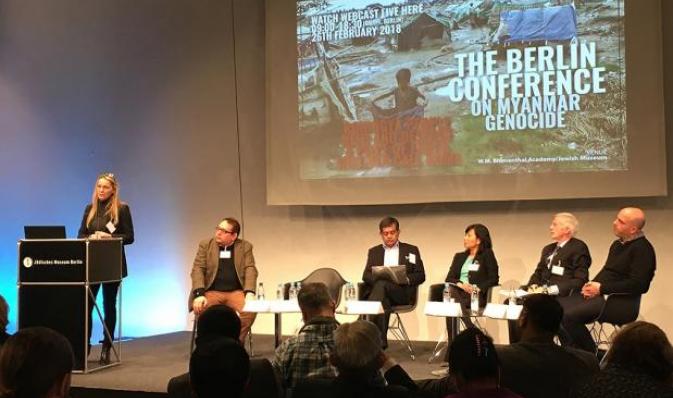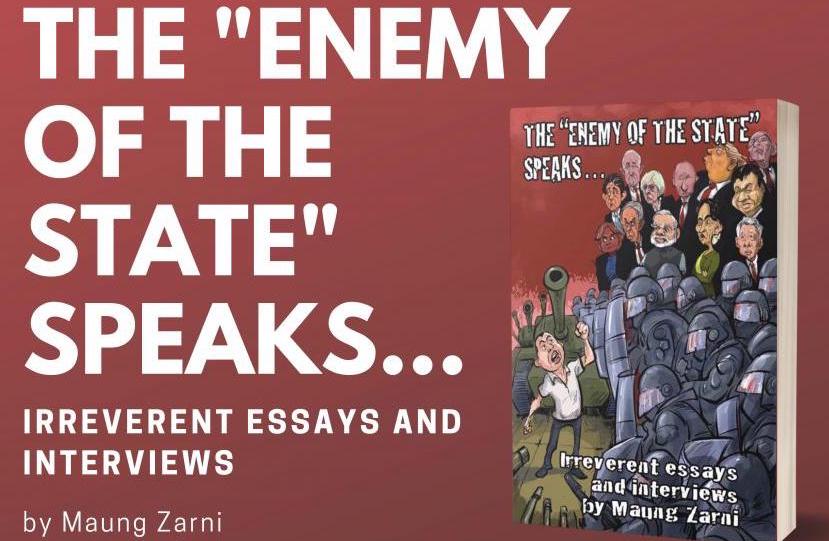
Published by USC Shoah Foundation on February 27, 2018
During her tenure at USC Shoah Foundation, Karen Jungblut has interviewed hundreds of genocide survivors from history’s most horrific chapters: the Holocaust, the 1994 Rwandan genocide against the Tutsi, the 1937 Nanjing Massacre and more.
So when she arrived in Bangladesh with a film crew late last year to interview Rohingya Muslims who’d survived a violent expulsion from their land at the hands of armed Myanmar security forces and Rakhine Buddhist mobs, it didn’t take her long to recognize in their stories the patterns of genocide.
Jungblut, the Institute’s director of global initiatives, shared her insights this week in a panel discussion at the Jewish Museum of Berlin, which hosted a conference on the “Myanmar genocide of the Rohingya people.”
The aim of the Monday event was to “inform German civil society and European public about the ongoing genocide of Rohingya people in Myanmar/Burma.”
To date, USC Shoah Foundation has interviewed nearly 100 Rohingya people at sprawling refugee tent camps in Bangladesh, which have swelled in recent months to include nearly 1 million people from the roughly 300,000 who’d already been pushed there decades ago. Jungblut has overseen the interviews, which have been conducted by people who speak Rohingya.
Joining Jungblut on the panel were Khin Mai Aung, a civil rights lawyer; Michael Charney, a professor of Southeast Asian history at SOAS University of London; Chowdhury Abrar, a professor of international relations from the University of Dhaka; and David Kilgour, a human-rights activist and 2010 Nobel Peace Prize nominee.
Jungblut said she was able to bring a unique perspective to the discussion.
“Not only because I’ve been in the camps and listened to the stories,” she said, speaking by phone from Germany, “but I’m not coming from a scholarly point of view, or a human-rights activist point of view either. I’m kind of straddling both areas.”
Jungblut shared with the roughly 150 people in the audience how the Institute was careful to record stories from a wide variety of geographic locations to better understand the degree to which the Myanmar government’s campaign was systemic.
The 44 women and 51 men whose oral histories have been recorded so far by USC Shoah Foundation were interviewed in four different refugee camps. They represent about 20 different villages from three townships along a 50-mile stretch: Rahedaung, Buthidaung and Maungdaw.
Despite the geographic separation, survivors from these areas shared stories that revealed patterns. These include being portrayed as outsiders by their tormentors. They also talk about Myanmar laws prohibiting or restricting the Rohingya from participating in basic societal activities: schooling, marriage, traveling – even purchasing cellphones.
And then there was the mass violence that characterized their removal: property destruction, livestock confiscation, burning of farms, systematic starvation, rapes and people shot in the back as they fled.
The violence was triggered by an event on Aug. 25, 2017, when a group of Rohingya militants attacked a number of police outposts at a time when Myanmar security forces were intensifying their presence near Rohingya-occupied areas. A dozen Myanmar officers were killed.
“The military was organized. Basically they were just waiting for a trigger,” Jungblut said. “The military was ready to go. Things happened so similarly in so many different villages.”
Jungblut said it isn’t yet clear how many of the 95 video interviews will ultimately be stored in the Visual History Archive. For one thing, about a third of the interviewees asked to remain anonymous for fear of retribution.
Another challenge to the USC Shoah Foundation crew is the large presence of news media in the camps. Jungblut said some Rohingya people are sensing that their stories are less interesting to reporters if they don’t advance the narrative.
“We’re not doing this like journalists by running after the story, but sitting there and listening to their story whatever their story is,” she said. “It’s a different way of looking at it and documenting the stories.”
Jungblut added that she appreciates how the media has spotlighted the misdeeds of the Myanmar government and kept pressure on the international community to act. But USC Shoah Foundation takes the long view, and so is not constrained by a need for new angles.
Still, Jungblut admits that she initially worried whether recording interviews was an appropriate response to so urgent a crisis.
“When I first walked into a camp, I thought, ‘What am I doing here? I’m not bringing food, water or medicine, I have no business here,’” she said.
But when she saw how eager people were to tell their stories, she changed her mind. The translators told the crew how much the Rohingya appreciated this format of interview.
“For me that is where it felt like a turnaround,” she said. “I realized, ‘This is where we are making a difference. We have a purpose.’”









